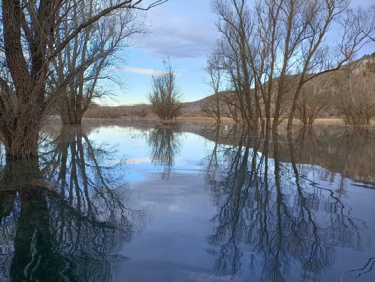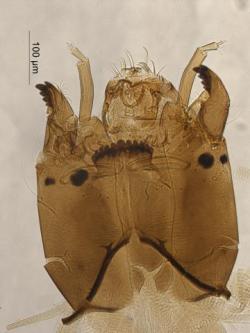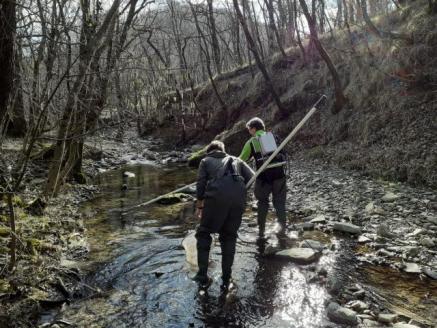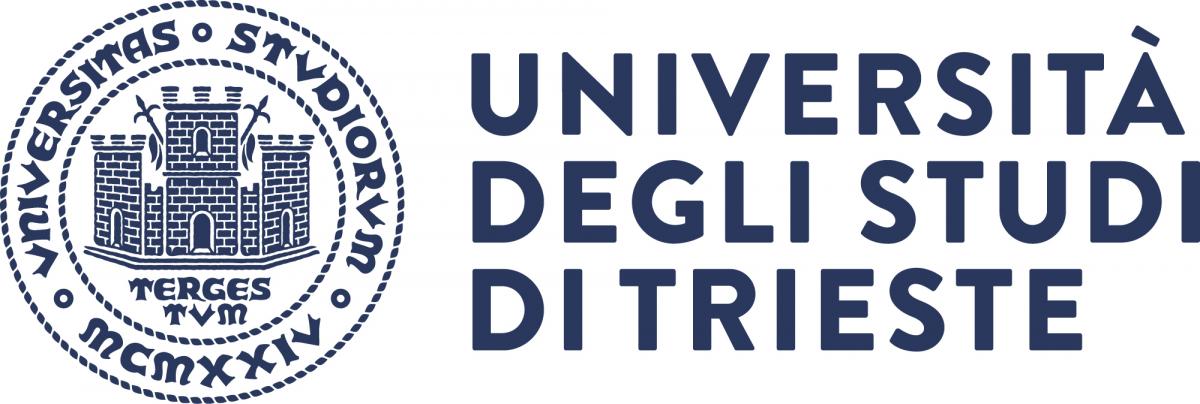The scientific activities are carried out individually or through collaborations and concern 1) the application of biotic indices in agreement with the European Directive 2000/60/EC; 2) analyses on the macrobenthic invertebrates in relation to the important role they play within trophic webs, in decomposition processes of the organic matter and in the energy transfer through the trophic levels in freshwater ecosystems; in this context, it is of particular interest the analysis of the energy densities of the organisms and the studies on the decomposition rates of the organic matter; 3) the study of biological and ecological aspects of freshwater fish species and the study of structures and dynamics of fish communities.
Current projects
1) Application of biotic indices in compliance with European Directive 2000/60/CE
The European Directive 2000/60/EC has been receipted in Italy by the D.L. 152/2006 and it requires the use of specific bioindicators for the assessment of the ecological status of water bodies. For lotic environments, these indicators are macrobenthic invertebrates, fish communities, aquatic macrophytes and diatom benthic algae. The D.M. 260/2010 reports the specific biotic indices that must be applied in ecological status assessment for the Italian water bodies. The application of the indices leads to a classification based on five quality judgments (high, good, moderate, poor or bad) and the worst judgment defines the ecological status of the monitored water body. The environments which are judged as moderate (or worst) must be subject to recovery policies.
Regarding the most recent projects, between 2019 and 2021 there was a collaboration with the Regional Authority of Friuli Venezia Giulia in the context of the GREVISLIN Project (GREen Vipava/Vipacco, and Isonzo/Soča INfrastructure), Interreg V-A Italia - Slovenia. The projects involved many partners from Italy and Slovenia and the main aims were i) to improve the management of the Isonzo River basin (with particular regard for the Isonzo/Vipacco system) and the Livenza River Basin on the basis of a long-term cross-border development plan for green infrastructures and ii) to improve cooperation between cross-border Authorities and Institutions in the context of synergic monitoring for aquatic systems.In collaboration with ETPI, fish community monitoring was carried out in the Isonzo River and Vipacco River. Italian and Slovenian monitoring/sampling methods and ecological quality/biodiversity assessment methods were compared. Allochthonous population was studied, with particular regard to Silurus glanis.
Recently, a project regarding the ecological status of the Doberdò Lake started in collaboration with the Regional Authority of Friuli Venezia Giulia. Sampling operations have been carried out in this karstic environment, in order to investigate macrobenthic invertebrate and fish communities. At the same time, chemico-physical parameters were constantly monitored. The obtained information will be related to intervention regarding the hydrometric level management of the lake and will be useful for future intervention planning.

View of the Doberdò Lake during sampling operations (Picture: Bertoli, 2021)
2) Macrobenthic invertebrates and organic matter decomposition in freshwater environments
Macrobenthic invertebrates play a pivotal role within the freshwater environments: they are an important trophic resource for many species of fish and birds, they cover all the roles of the consumers and have a key function in the processing of the organic matter; finally, they are used as bioindicators, as required by the European laws. Macrobenthic invertebrates play also a pivotal role in detritus processing. The organic matter decomposition dynamic is of pivotal interest, as plant breakdown is a fundamental process in the metabolism of freshwater ecosystems. In this context, analyses of decomposition dynamic have been carried out using the leaf bag technique. This method allows the study both organic matter decomposition rates and macrobenthic invertebrate colonizers. Seasonal activities have been performed in different freshwater environments, (Isola della Cona wetland, Isonzo River, Vipacco River and Doberdò Lake) in order to investigate decomposition rates and their relationship with seasonality, macrobenthic invertebrate communities and abiotic features.
Regarding the recent projects, studies were carried out at the Doberdò Lake in the context of a collaboration with the Regional Authority of Friuli Venezia Giulia. The results highlighted the effects of the hydrological level variation on the system dynamics and the response of the macrobenthic invertebrate communities. Moreover, it was possible to highlight the effects on the organic matter decomposition rates, also in relation to the climate change.
Studies regarding riverine ecosystems were recently performed in the Vipacco River. In collaboration with Prof. Monia Renzi of the DSV and the Bioscience Research Center of Orbetello, the impact of microplastic pollution on macrobenthic invertebrate communities in relation to their trophic roles in the freshwater ecosystems was assessed. The aim of the study was also to investigate the impact due to microplastic presence on the organic matter decomposition dynamics. In particular, the analyses focus on the relationship between microplastics, macrobenthic invertebrate communities, abiotic features and river discharge variation.

Head capsule of a Diptera Chironomidae specimen (genus Paratanytarsus) collected during the activities carried out in alpine lakes (Picture: Bertoli, 2020)
3) Ecological analyses in alpine and subalpine lakes
Alpine lakes can be considered as pristine, unpolluted ecosystems, due to their remote location but, despite this fact, since the early 1980s these environments were identified as being affected by air pollutants from emission sources in the lowlands. Alpine ecosystems are particularly sensitive to global anthropogenic impacts and the hydrochemistry of mountain lakes is considered as an “early response” indicator of climate change, atmospheric deposition, and air pollutants. These threats affect the chemical and biological characteristics of lake waters such as species distribution, oxygen levels and nutrient cycling.
The purpose of the present project is to improve the knowledge about these environments in the Northern Italy and to provide useful information to prepare proper management plans for the conservation of the study areas and of the present species, by studying the lake morphology, substrates, chemical-physical water parameters and the main plant and animal communities.
In this context, it is of particular interest the study of the conservation status of present amphibian species listed in the European Directive 92/43EEC, such as Bombina variegata and Rana temporaria.
The seasonally scheduled sampling activities include a chemical and physical characterization of the water bodies, analysis of macrobenthic invertebrate communities, fish communities and aquatic macrophytes. In addition, the concentrations of heavy metals and organic pollutants will be investigated at different trophic levels (both for fish and macrobenthic invertebrates) in collaboration with the Experimental Zooprophylactic Institute of Piedmont, Liguria and Valle d'Aosta.
Analyses imply the use of gas chromatography, liquid chromatography and mass spectrometry. Finally, the potential impact of the present fish species on the amphibian species cited above will be investigated, with particular attention to the possible presence of allochthonous fish species.

Marble trout specimen (Salmo marmoratus) during the biometric data collection (Picture: Franz, 2017)
4) Analysis of the freshwater fish communities and ecological/biological investigations on relevant fish species
From many years, several projects have been led, in order to study the distribution of the fish species which constitute the communities of the freshwater environments in the Region Friuli Venezia Giulia. These projects have been funded by the former Safeguard Fisheries Authority (ETP), now Fish Heritage Safeguard Authority (ETPI). The monitoring plans have been led in relation to the continuous transformations involving the fish communities, due both to natural and anthropogenic factors. Among impacts caused by human activities, water diversion for hydropower purposes, the stocking activities for fishing purposes and the modifications/regimentation of riverbeds (using native and alien species) can be cited. From this set of problems arises the importance of continuously monitoring the status of the fish communities, with the aim to provide useful information for the preparation of adequate management plans, based on recent datasets.
Specific studies concern fish species which are deemed of interest, in order to investigate some aspects regarding biology and to define the correct distribution areas. Recent works have been conducted to study the reproduction of Salmo marmoratus, the taxonomy of the genus Esox, and the distribution of invasive species such as Silurus glanis. Biology, distribution and reproduction of Barbus balcanicus and Gobio gobio have been studied in the little tributaries of the Isonzo River basin, while Aphanius fasciatus, Knipowitschia panizzae (listed in the Directive 92/43/EEC) and Pomatoschistus marmoratus have been studied in the brackish environments of the Natural Regional Reserve of the Isonzo River Mouth. Currently, a collaboration with the Ca’ Foscari University is active to study Pomatoschistus marmoratus and Pomatoschistus canestrinii (the latter is listed in the European Directive 92/43/EC).
Nowadays, an eradication project regarding Salmo trutta in the Val Rosandra-Dolina Glinščice Natural Reserve is currently active in collaboration with the management authority (S. Dorligo Municipality) and ETPI. Another eradication project (again in collaboration with ETPI,) regards Chondrostoma nasus in the Chiarò Creek. The collaboration with ETPI is also involved in a study about ecological investigations on the native fish species of Friuli Venezia Giulia (with regard for species of Community interest), due to obtain useful information for the management in the Regional territory.

Electrofishing sampling activities in the Rosandra Stream (Picture: Di Luca, 2020)
A collaboration between DSV, the Politecnico of Turin and the Eastern Alps Basin Authority is now active in order to obtain data regarding the distribution and habitat preferences for native fish species. The information will be used to obtain models for the calibration and validation of the MesoHABSIM method (MesoHABitat SIMulation model, Manuali e Linee Guida ISPRA 154/2017) in the lowland and alluvial spring water areas within the Eastern Alps Hydrological District. Results will be useful for the realization of the Measure Plan for the verification of the ecological flow.
Finally, Dr. Elisabetta Pizzul is now collaborating to realize the update of the Italian freshwater fish species Red List, cured by IUCN.




